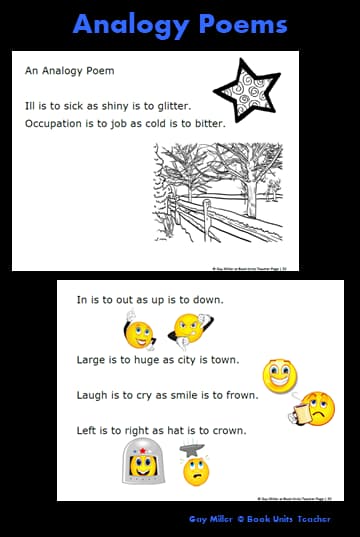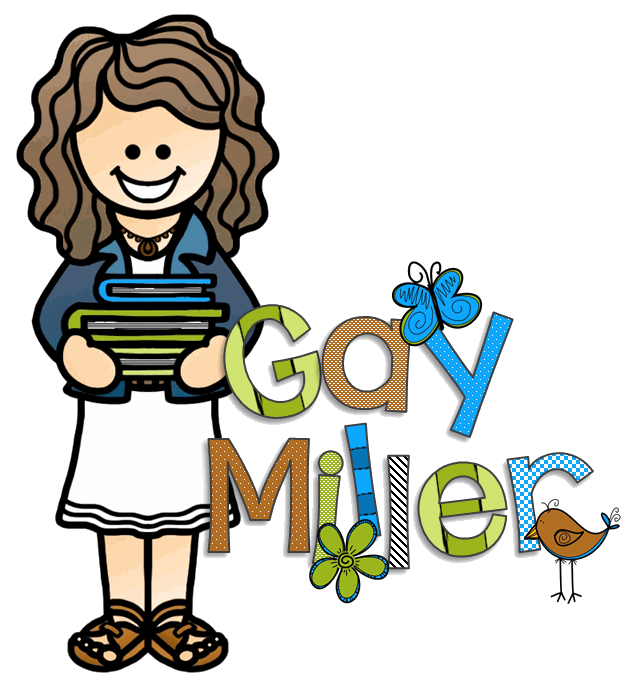
Teaching analogies with synonyms and antonyms is a powerful way to help your 4th and 5th-grade students learn new words. In this blog post, you’ll discover engaging, hands-on activities that introduce analogies using synonyms and antonyms—two of the most common and accessible word relationships for younger learners.
You will also find some resources that you can use to check your students’ understanding of analogies, such as response cards and a Boom Learning practice that I created for this post.
📥 Grab the Handout – Includes all printable activities featured in this post.
Teaching Standards
These activities align with the following Common Core State Standards:
- CCSS.ELA-Literacy.L.4.5.c Demonstrate understanding of words by relating them to their opposites (antonyms) and to words with similar but not identical meanings (synonyms).
- CCSS.ELA-Literacy.L.5.5.c Use the relationship between particular words (e.g., synonyms, antonyms, homographs) to better understand each of the words.
Teaching Analogies with Synonyms and Antonyms
Activity 1: Response Cards for Synonyms and Antonyms

Response cards are a great way to keep your students engaged and check their understanding of word relationships. They are cards that students hold up to show their answers to questions or prompts. You can use them to review synonyms and antonyms with your students.
For this activity, students need two response cards, one for synonyms and one for antonyms. You can print the response cards from the handout or make your own. One set of response cards has pictures to help differentiate instruction for your students.
To use the response cards, show your students a pair of words on the board or a screen. Ask them to identify if the words are synonyms or antonyms and hold up the corresponding response card. For example, if you show them smooth and rough, they should hold up the antonym card. You can quickly scan the room to see who has the correct answer and who needs more practice.
You can use the following word pairs for this activity or create your own:
- early / late
- smooth / rough
- near / close
- full / empty
- large / giant
Activity 2: Round About Game for Analogy Practice

Round About is a fun game that helps your students practice analogies using synonyms and antonyms.
You must print out one set of analogy cards and a recording sheet for each student from the handout for this game. Cut the analogy cards apart before gameplay.
To play the game, follow these steps:
- Give each student a recording sheet. Tape an analogy card with a word on each student’s back. Instead of tape, I like to use lanyards. Students hang these around their necks so the information pocket hangs down their backs. It is easy to slip the word cards into the pockets of the lanyards for this activity.
- On the recording sheet, students have a list of analogies with the final word missing. To play the game, students walk around the room, looking for a word to complete each analogy. For example, if they see fast on someone’s card, they know this will complete the analogy – soft : loud :: slow : __________.
- When an answer is spotted, students write it next to the corresponding number on their recording sheet. They can only write down the word if they find it on someone’s card. They cannot use their own words or guess.
- Students continue this activity, completing as many analogies as possible until the timer goes off.
There are different recording sheets. Each corresponds to one of the three levels of difficulty for this game:
- Level 1: On Level Readers: The analogies use common words appropriate for 4th–5th-grade students.
- Level 2: Below-Level Readers: The analogies use the exact words as Level 1 but have pictures to help students understand the terms.

- Level 3: Advanced Readers: The analogies use more challenging words for the first pair, but the second pair is the same as Levels 1 and 2. This way, all students can play the same game but at different difficulty levels.
You can choose which level to use for your students or mix and match them according to your students’ needs.
Activity 3: Boom Learning Deck for Analogy Practice

Boom Learning is a platform that allows teachers to create and use interactive lessons and games for their students. You can assign them to your students online and get instant feedback on their progress and performance.
This Boom Learning Deck has the same analogies as the Round About Game but in a digital format. Your students will see an analogy with the last word missing and have to choose the correct word from a list of options. They will get immediate feedback on whether they are right or wrong. The handout includes the link to this Boom Deck.
Activity 4: Picture Analogies
Students work in pairs or groups to illustrate analogies using drawings. For example:
big : large :: small : tiny
Each group creates a visual representation of their analogy pairs and presents them to the class.

In this activity, each student will create a drawing that is part of an analogy. The group will decide whether to use synonyms or antonyms for their analogy. Then, they will pair up and make drawings that match each other.
For example, if they choose synonyms, one pair might draw a big house and a large mansion, and the other pair might be a tiny bicycle and a small car. The drawings should show the relationship between the words clearly.
The final product will look like a series of four pictures that form an analogy.
Activity 5: Analogy Situations
Students create posters using analogy-based similes to compare real-life situations, such as:
Going to the dentist was like walking into a haunted house.
This helps students build descriptive language while reinforcing relationships.

In this activity, the group will create a poster that compares two real-life situations using an analogy. The analogy should be like a simile, a figure of speech that uses the words “like” or “as” to compare two things. The analogy should be creative and descriptive and show how the two situations are similar or different.
Activity 6: Analogy Poems
Students craft poems with at least four lines, using analogies in each line with rhyming ends. Example:
In is to out as up is to down
Large is to huge as city is to town
Laugh is to cry as smile is to frown
Left is to right as hat is to crown

In this activity, the group will write a poem that uses analogies. The poem should have at least four lines, and each line should have an analogy with the last word rhyming with the previous line. The analogies can use synonyms, antonyms, or other word relationships. The poem should have a theme or a message that connects the analogies.
Analogies are an excellent way to help your students expand their vocabulary. I hope you will enjoy using these activities and resources to teach your students analogies using synonyms and antonyms.
Download the Teaching Analogies with Synonyms and Antonyms Handout.
Everything you need—response cards, recording sheets, Boom links, and project templates—is included.
Want to go deeper with older or more advanced students? Check out the companion post:




